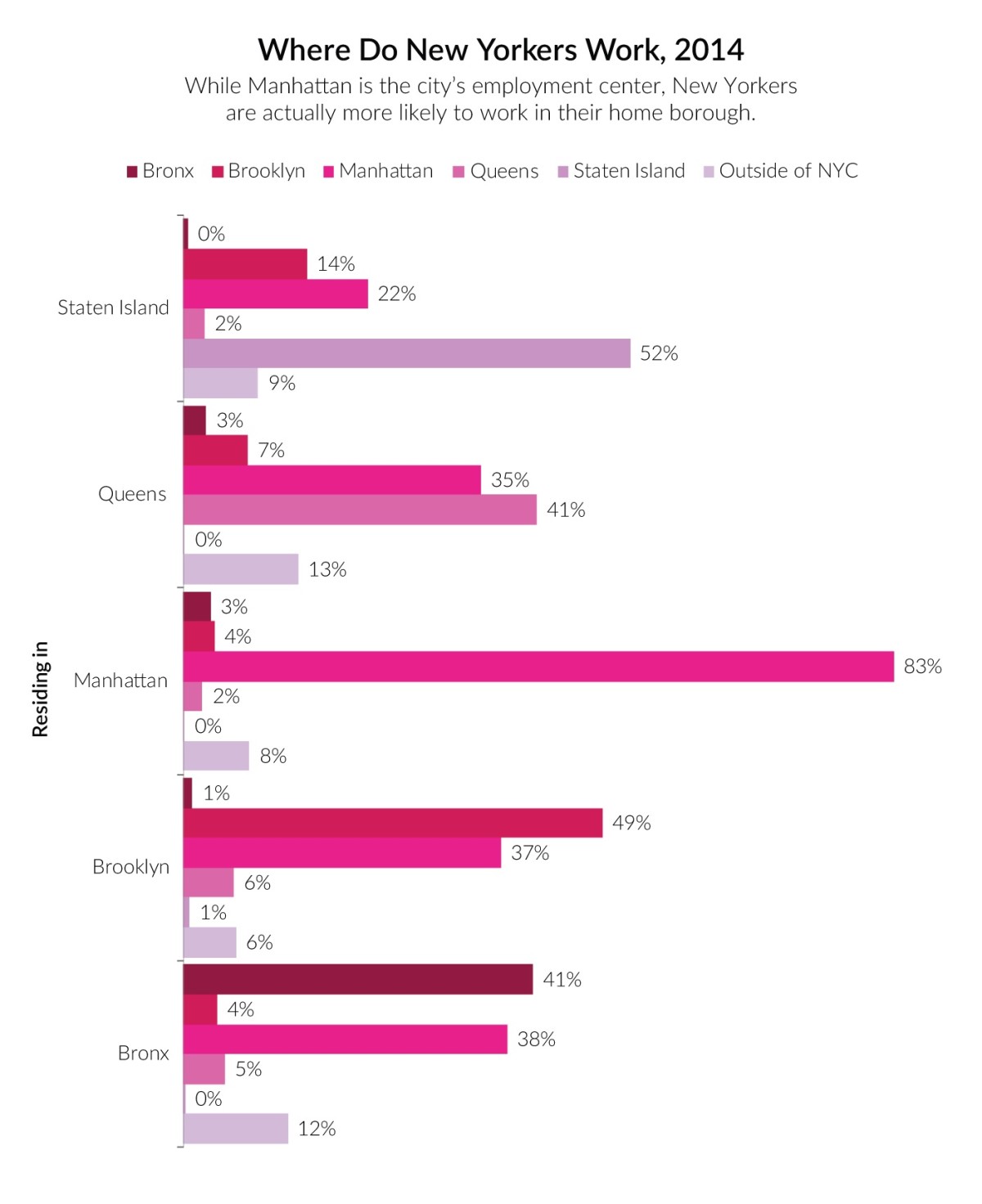Location, location, location. How much time you spend on your commute is how much time you don’t have to do things more fun or satisfying than standing in a metal box underground surrounded by strangers who run the gamut from exhausted to openly distraught.
A new report from the Center for an Urban Future, Fast City, Slow Commute, features some great maps made on, you guessed it, Bushwick’s CartoDB.
In Brooklyn, commute times are, as you might expect, lowest in the nabes closest to the river, and longer the farther out you get. That is likely because more than a third of Brooklynites work in Manhattan.
“While Manhattan is clearly the city’s employment center, New Yorkers are actually more likely to commute to work in their own borough,” according to the report. In fact, 49 percent of commuters in Brooklyn commute within Brooklyn; 37 percent commute to Manhattan.
Working from home is also on the rise.
According to the report, the “number of New Yorkers working from home increased by 68 percent from 2000 to 2014 and now represents 3.9 percent of the city’s working population. … Interestingly, it is those neighborhoods with the closest proximity to job centers and the best transit options that have the highest share of residents who work out of their home.”
Most Brooklynites take mass transit to work. Brooklyn Heights/Fort Greene leads in that category with 73.5 percent of its residents taking mass transit. Borough Park, down in South Brooklyn, had the least mass transit commuters, with less than half taking mass transit. It also led the borough in highest percentage of people walking or biking to work, with 22.3 percent.
The Center for an Urban Future had three major recommendations for reducing commuting times and making life easier for workers.
- Accelerating the modernization of the MTA’s signal system.
- Introducing tolls on the city’s East River bridges, which would generate $1.5 billion in net annual revenue for the MTA.
- Making LIRR a more intregated part of the MTA system (by getting it on MetroCard and reducing fares).
Join the conversation!
Find news, events, jobs and people who share your interests on Technical.ly's open community Slack
